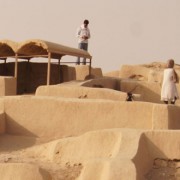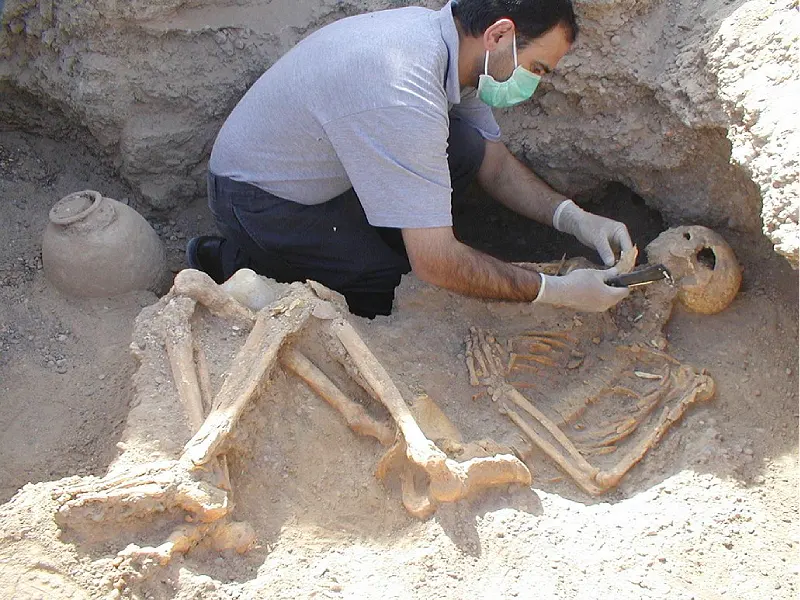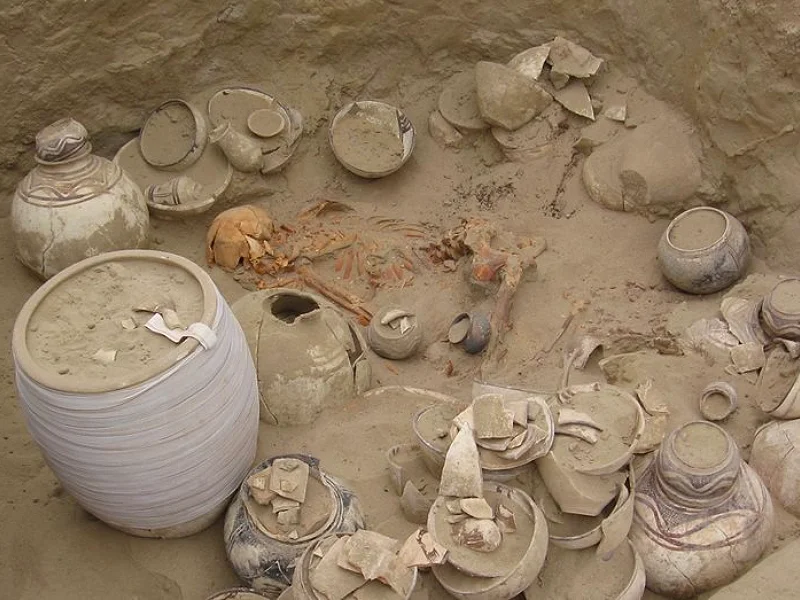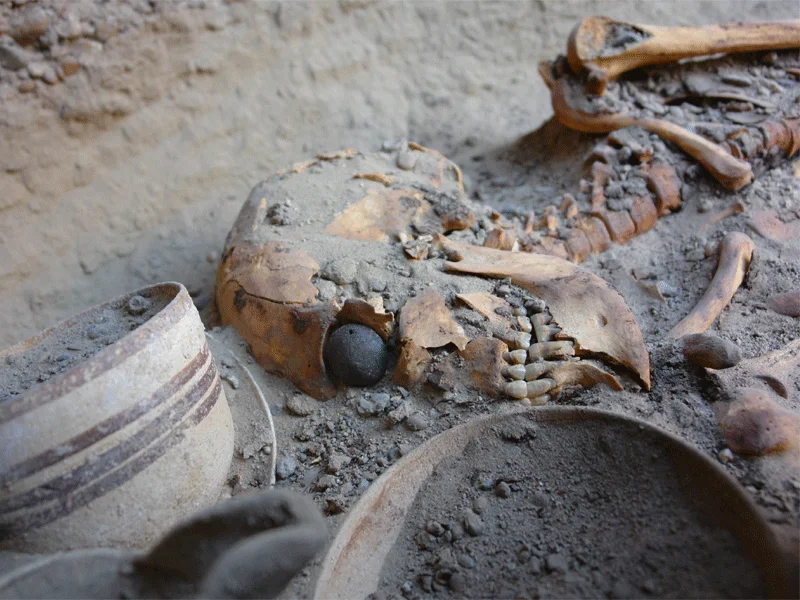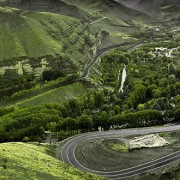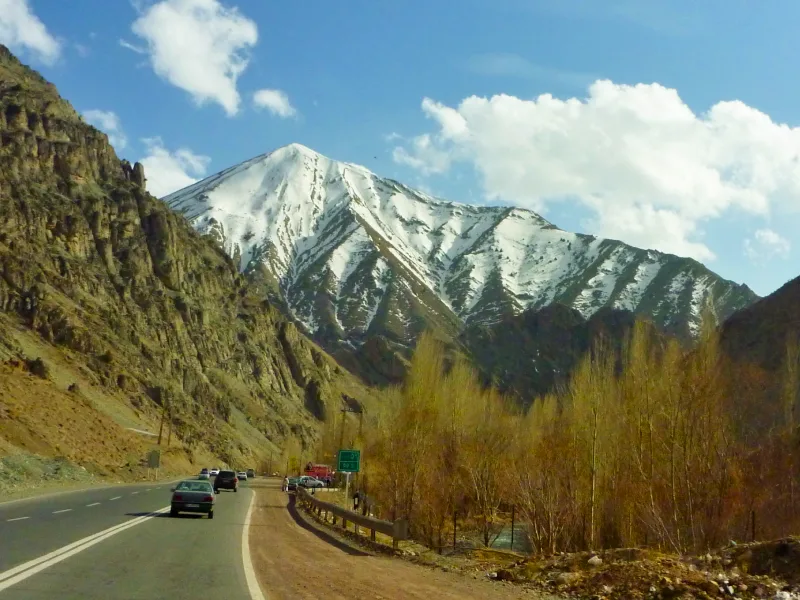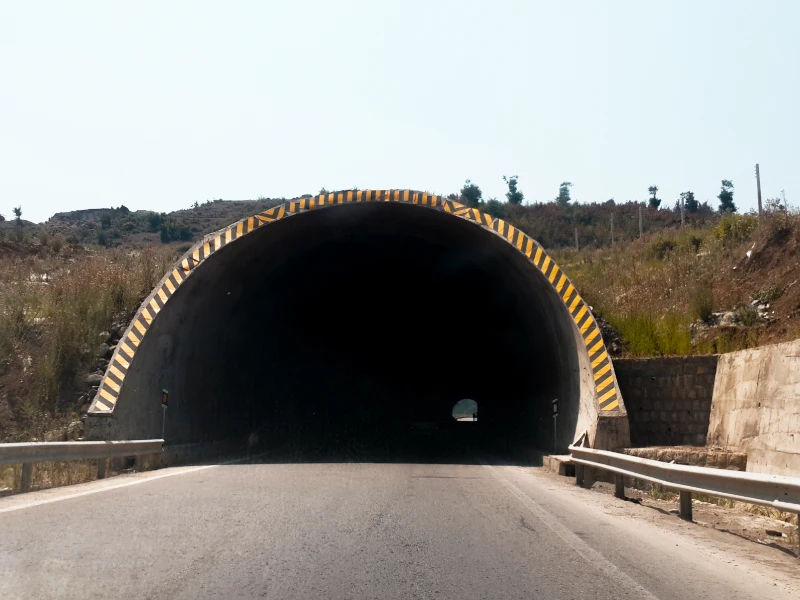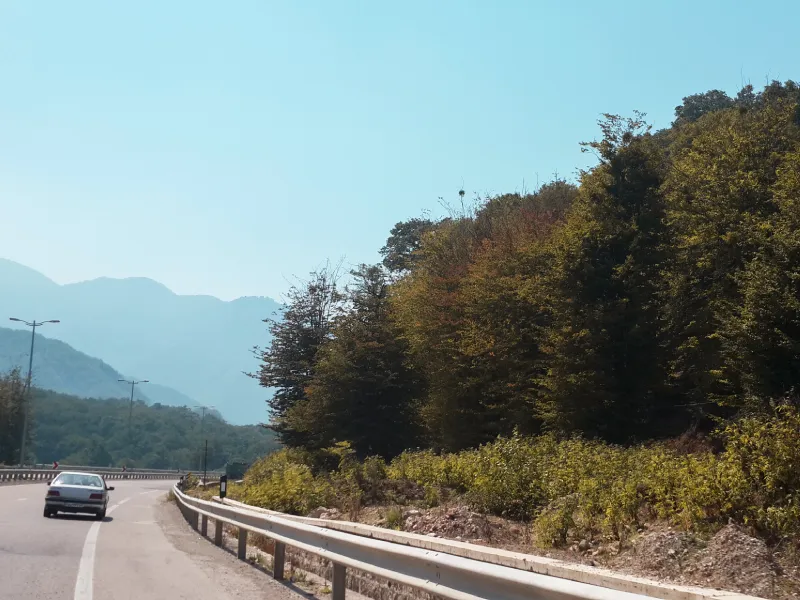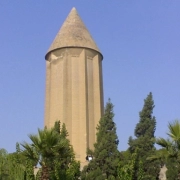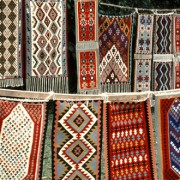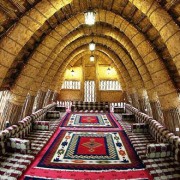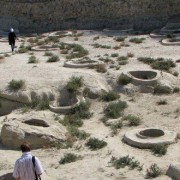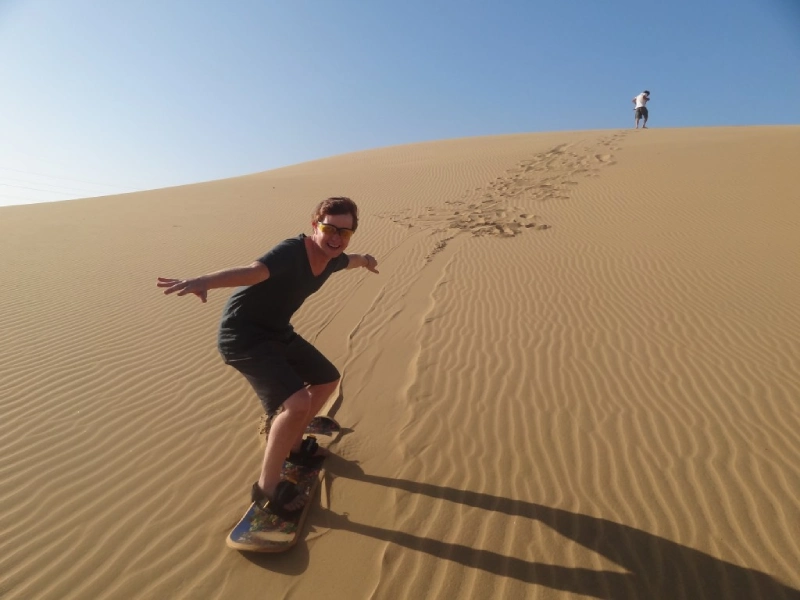Shahr-e Sukhteh (Burnt City), Iran: History, Photos
In the heart of Iran’s Sistan and Baluchestan Province lies a city that seems to whisper secrets of a forgotten civilization—Shahr-e Sukhteh, named after the signs of fire damage found during excavations, meaning the “Burnt City.” This ancient city, steeped in mystery and intrigue, has captivated historians, archaeologists, and adventurers alike for decades. The ruins of this prehistoric city became a UNESCO World Heritage Site in July 2014.
The city gets its dramatic name from the evidence of multiple fires that once scorched the settlement. But even through the ashes, its legacy glows. From the world’s oldest animated pottery to what is believed to be the earliest artificial eye, Shahr-e Sukhteh is unlike any other archaeological site on Earth. With a history dating back over 5,000 years, it’s a destination not only rich in artifacts but also in stories that stretch the imagination. This article delves into every fascinating corner of this marvel, perfect for both travelers and curious minds in search of humanity’s ancient ingenuity.
About Shahr-e Sukhteh
Located between the Helmand River and the vast deserts of southeastern Iran, Shahr-e Sukhteh was once a flourishing metropolis of the Bronze Age. Spanning over 151 hectares, it’s believed to have been one of the largest cities of its time. Unlike many ancient cities that developed around trade or warfare, Shahr-e Sukhteh was primarily a center for innovation, with advanced urban planning and a unique culture that didn’t mirror the major civilizations of Mesopotamia or the Indus Valley. Its sheer size and complexity reflect a society ahead of its time, both scientifically and artistically.
The city showcases civilization that embraced progress in every sphere—be it architecture, craftsmanship, or even early forms of medicine. From residential areas to workshops and cemeteries, every inch of the site reveals how people lived, died, and celebrated life.
What truly makes Shahr-e Sukhteh stand out is its individuality. Despite being contemporaneous with major Bronze Age cultures, its artifacts and construction style show little influence from them, suggesting it developed independently. That autonomy is what makes it so important in understanding human evolution and cultural diversity.
Shahr-e Sukhteh History
The tale of Shahr-e Sukhteh’s rediscovery began in the early 20th century when archaeologists first stumbled upon signs of an ancient settlement beneath the desert sands. Serious excavation began in the 1960s under the guidance of Italian archaeologist Maurizio Tosi, whose efforts unveiled layers of a civilization that had been untouched for millennia.
The site was buried not by conquest or disaster, but by time and the elements, preserving artifacts in extraordinary condition. From intricate ceramics to skeletal remains, everything unearthed pointed to a culture rich in creativity and structure.
Historical analysis reveals that the city was inhabited between 3200 BCE and 1800 BCE. Over those 1400 years, it experienced four main periods of habitation before it was mysteriously abandoned.
The reasons behind its decline remain unclear—some speculate environmental changes, while others suggest internal societal shifts. But one thing is certain: the fall of Shahr-e Sukhteh marked the end of a civilization that had already left an indelible imprint on human history. Today, the city stands not as a relic of the past, but as a beacon of human potential, inviting us to question what we really know about early societies.
Shahr-e Sukhteh Age
Shahr-e Sukhteh’s sheer age is staggering—it’s believed to have been established around 3200 BCE, making it older than most of the pyramids of Egypt and nearly as ancient as the early Mesopotamian cities.
Radiocarbon dating and stratigraphic studies confirm that this city flourished for over a millennium, suggesting not just a long-standing habitation but a sustainable way of life. Considering the harsh desert climate, the fact that such an advanced society could survive for that long is nothing short of extraordinary.
Its age adds a layer of depth to its discoveries. When researchers analyze tools, bones, and artwork from the site, they’re not just looking at old objects—they’re peering into the minds of people who lived over 5,000 years ago.
Unlike other ancient cities that show signs of evolution through conquest or cultural absorption, Shahr-e Sukhteh appears to have grown organically. It matured with its own pace, values, and innovations. Understanding its age gives scholars context on how unique and self-reliant this civilization was in the broader timeline of human history.
Shahr-e Sukhteh Things to Do
For modern-day explorers, visiting Shahr-e Sukhteh is like stepping into a real-life time capsule. One of the most rewarding experiences is walking through the preserved urban layout, which still features remnants of streets, workshops, and residential quarters. Guided tours can enhance the visit, offering stories and insights into how the city once thrived.
Visitors often describe an overwhelming sense of wonder as they stroll through the dusty paths that once buzzed with activity thousands of years ago. It’s not just a visit—it’s a unique journey into humanity’s ancient past.
The nearby museums house a rich collection of artifacts, including pottery, tools, and personal items that were discovered during excavations. Travelers can also engage with local communities that take pride in preserving and narrating the city’s legacy. Traditional Baluchi crafts, music, and cuisine offer a blend of old and new, giving a complete cultural experience. Whether you’re an archaeology enthusiast or a curious traveler, Shahr-e Sukhteh offers a profound sense of connection to our shared human story.
Shahr-e Sukhteh Bowl
Among the many astonishing discoveries from Shahr-e Sukhteh, one artifact continues to captivate minds around the world—the animated bowl. This pottery piece, dating back over 5,000 years, features a sequence of images depicting a goat leaping to nibble from a tree. When rotated, the sequence mirrors the concept of modern animation, making it the world’s oldest known example of animation.
What’s fascinating is not just the artistry but the understanding of motion and storytelling it implies. The artists of Shahr-e Sukhteh were not merely decorative in their approach, they were narrators, inventors, and perhaps the first animators in human history. If Shahr-e Sukhteh is not on your list for your tour in Iran, we highly recommend you see the world’s first animation in the National Museum of Iran in Tehran.
The bowl isn’t just an isolated artistic marvel, it’s a reflection of how advanced and imaginative this ancient civilization was. The symmetry, precision, and fluidity of the goat’s motion suggest an intricate understanding of both biology and visual perception. Some scholars believe it could have been used for ceremonial purposes, while others argue it was simply an artistic expression.
Regardless of its function, the bowl is now a symbol of how Shahr-e Sukhteh defied every conventional narrative about ancient societies being primitive. It challenges us to reconsider the origins of art, animation, and intellectual curiosity.
Shahr-e Sukhteh Eye
Perhaps the most headline-grabbing discovery from Shahr-e Sukhteh is the world’s oldest artificial eye, found in the skull of a woman estimated to be between 25 and 30 years old. This marvel dates back to around 2900 BCE and is crafted from a mixture of bitumen paste and natural tar, with delicate gold threads embedded to simulate capillaries.
What’s most incredible is not just the invention itself, but how advanced the craftsmanship was. The eye was so well-fitted into her socket that it left a lasting imprint on her upper eyelid—a sign she wore it regularly, not just ceremonially.
This ancient prosthetic tells us volumes about the society’s medical knowledge and commitment to human dignity. The very idea of creating and wearing a prosthetic in such a realistic and aesthetically pleasing way reveals a compassionate and medically aware culture.
Today, this artifact is not only a medical milestone but also a profound symbol of the city’s humanity and ingenuity. It shifts the narrative about Bronze Age civilizations, proving they were not just surviving—they were thriving, innovating, and even practicing forms of early healthcare and cosmetic surgery.
Shahr-e Sukhteh Location
Located in the vast desert landscape of southeastern Iran, Shahr-e Sukhteh rests about 55 kilometers west of the modern city of Zabol, near the Afghan border. Its location, though remote today, was once a hub of civilization. Thousands of years ago, this site was strategically positioned along important trade routes connecting Mesopotamia, the Indus Valley, and Central Asia. The Helmand River, which once flowed nearby, provided much-needed water for agriculture, making it an oasis in the midst of arid terrain. This geography played a major role in the city’s prosperity and unique cultural evolution.
Visiting the site today, surrounded by silence and sand, gives one a mysterious sense of the passage of time. It’s a location that offers not only historical insights but also a powerful emotional experience, making it a must-see for those who truly want to touch the ancient past.
Last Words
Shahr-e Sukhteh is more than an archaeological site—it’s proof of human resilience, creativity, and the unending quest for knowledge. Its ruins whisper tales of innovation, compassion, and culture that transcend time. From the earliest artificial eye to the world’s first animated artwork, the city pushes the boundaries of what we thought we knew about ancient civilizations. For centuries, it lay hidden beneath the sands, waiting to redefine history—and now that it has, the world is finally beginning to listen. Every stone, artifact, and skeleton uncovered adds another piece to the grand puzzle of human evolution.
In a world obsessed with modern marvels, Shahr-e Sukhteh reminds us that greatness often begins in the most unexpected places. It humbles us with its achievements and inspires us with its stories. Whether you’re an adventurer, a history buff, or someone simply curious about the ancient world, this burnt city will leave an indelible mark on your soul. It’s a destination where the past isn’t just preserved—it’s alive. So, the next time you think about ancient cities, remember this hidden gem in Iran’s desert—a city that burned but never truly died.
Are you planning to travel to Iran and looking for an Iran travel agency? Check out our Iran tours and feel free to contact us.

